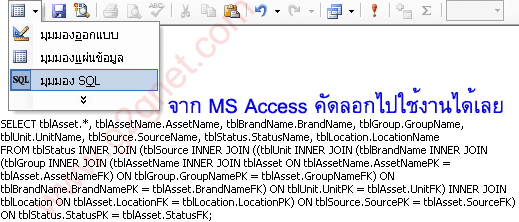

- #QB SDK TRANSACTION UPDATE USING ACCESS VBA HOW TO#
- #QB SDK TRANSACTION UPDATE USING ACCESS VBA CODE#
- #QB SDK TRANSACTION UPDATE USING ACCESS VBA WINDOWS#
If you want to remove data only from certain fields in a table, use the UPDATE statement and set those fields equal to NULL, but only if they are nullable fields. In most cases, you'll want to qualify the DELETE statement with a WHERE clause to limit the number of records to be removed. To remove all the records from a table, use the DELETE statement and specify which table or tables from which you want to delete all the records. The DELETE statement does not remove the table structure-only the data that is currently being held by the table structure. The DELETE statement can remove one or more records from a table and generally takes this form: DELETE FROM table list This is also known as truncating a table. To delete the data that is currently in a table, you use the DELETE statement, which is commonly referred to as a delete query. In most cases, you'll want to qualify the UPDATE statement with a WHERE clause to limit the number of records changed. To update all the records in a table, specify the table name, and then use the SET clause to specify the field or fields to be changed. Here’s an example: Public Function CreateOrder (lngCompanyID as Long) On Error GoTo ErrorHandler Dim rs As ADODB.Recordset Dim strSQL as String Dim con as ADODB.Connection Set con New ADODB. The UPDATE statement can modify one or more records and generally takes this form. To batch your SQL transactions you need to use the BeginTrans, CommitTrans and RollbackTrans actions of the ADODB connection object. To modify the data that is currently in a table, you use the UPDATE statement, which is commonly referred to as an update query. If the tables are defined exactly alike, you can leave out the field lists. INSERT INTO tblCustomers (CustomerID,, ) The following INSERT INTO statement inserts all the values in the CustomerID, Last Name, and First Name fields from the tblOldCustomers table into the corresponding fields in the tblCustomers table. When you are inserting records from another table, each value being inserted must be compatible with the type of field that will be receiving the data. VALUES (1, Kelly, 'Jill', '555-1040', add many records to a table at one time, use the INSERT INTO statement along with a SELECT statement. You can omit the field list, but only if you supply all the values that record can contain.
#QB SDK TRANSACTION UPDATE USING ACCESS VBA WINDOWS#
The table or tables appear as one or more windows in the query designer, and the windows list all the fields in each table. Select the table or tables that contain the records that you want to update, click Add, and then click Close. INSERT INTO tblCustomers (CustomerID,, ) On the Create tab, in the Queries group, click Query Design. For example, the following statement will insert the values "1", "Kelly", and "Jill" into the CustomerID, Last Name, and First Name fields, respectively. To define the value list, use the VALUES clause. To add one record to a table, you must use the field list to define which fields to put the data in, and then you must supply the data itself in a value list. INSERT INTO statements are commonly referred to as append queries. In both cases, you use the SQL statement INSERT INTO to accomplish the task. The first is to add one record at a time the second is to add many records at a time. There are essentially two methods for adding records to a table. In this article Insert records into a table For this example, we are interested in testing the /jokes/random endpoint, which gives a random joke about Chuck Norris. Enter the Social category All Categories list and select this API from the list. If after trying this example, you receive a "not defined" error on the "Dim db as Database" declaration, you will need to follow some additional instructions.Thank you. Immediately after registration, you can go to the Chuck Norris API page. You can then call the function from a Form (ie: button click event, etc) or a Macro and it will update the DepositAmount and WithdrawalAmount fields. 'Change Withdrawal Column to equal the Deposit Column Paste in the following code: Function UpdateAmounts() As Boolean Open your Access database, click on the Modules tab and create a new Module.

How can I do this?Īnswer: You can update your DepositAmount and WithdrawalAmount fields using a custom function.
#QB SDK TRANSACTION UPDATE USING ACCESS VBA CODE#
I want to use VBA code to update the Withdrawal Column to equal the Deposit Column then to zero the Deposit column. Question: In Microsoft Access 2003/XP/2000/97, I have a table which has two fields - DepositAmount and WithdrawalAmount.
#QB SDK TRANSACTION UPDATE USING ACCESS VBA HOW TO#
This MSAccess tutorial explains how to perform an update to a table using VBA code in Access 2003 (with step-by-step instructions). MS Access 2003: Perform an update with VBA code


 0 kommentar(er)
0 kommentar(er)
